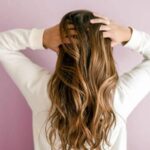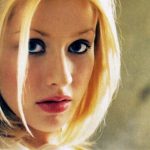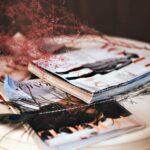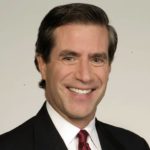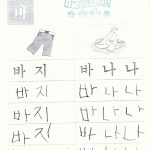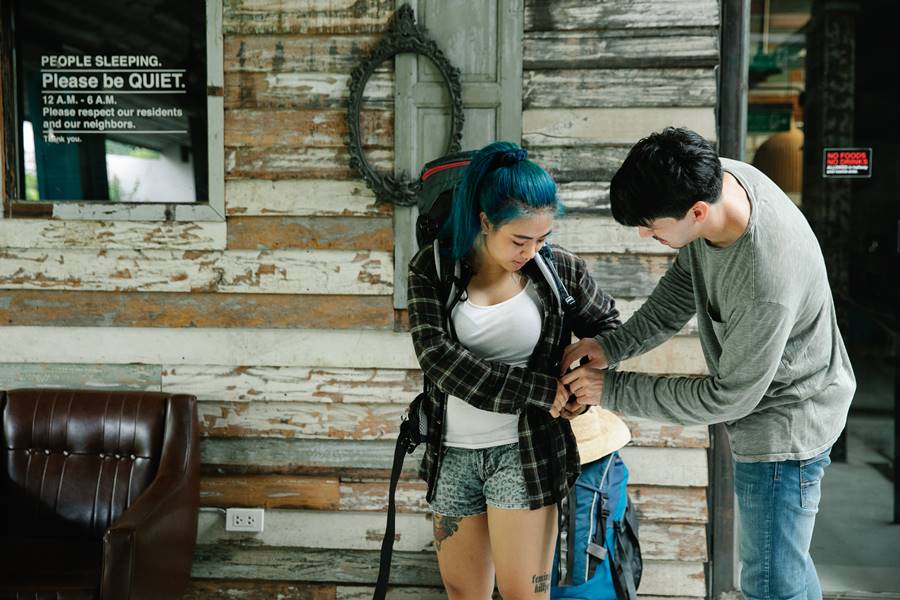
By Jae-Ha Kim
Chicago Sun-Times
May 19, 2004
There used to be a time when women were embarrassed to admit they colored their hair. (Remember how Lucy Ricardo kept insisting her hair was naturally red on “I Love Lucy”?)
These days, anything goes. Teenage starlets such as Mischa Barton are dyeing their blond hair brown. Brad Pitt gets matching blond highlights with Jennifer Aniston. And some moms even bring their children to stylists to have their hair treated.
This all confirms our mantra that these days there’s no shame in dyeing that mane.
“I remember my mom never admitted she dyed her hair,” says Anna Tzeng, 32, of Rogers Park. “She had jet-black hair through her 70s and she would insist it was genetic. I started getting gray hair in my late 20s and I had no qualms about dyeing my hair. I’ve even started experimenting with highlights and other colors that aren’t what you’d expect an [Asian American] woman to have been born with. It’s loads of fun.”
Adds hairstylist Leigh Jones of Oak Street’s Leigh Jones Coiffures, “No one cares whether your hair color is natural or not. It’s a matter of whether the color works for you. Does it fit you? That’s all that matters.”
We hate to sound a cliche, but apparently blonds really do have more fun. How else would you explain the endless stream of American women going blond?
“I’ve been a hairstylist for almost 40 years,” Jones says. “Anything goes with hair color these days, but everybody wants to be blond. I did one client’s hair, changing it from black black to platinum blond. I told her I’d change her hair back to black if she didn’t like it, but she loved it and freaked out because she didn’t really know what having blond hair would mean until she changed it. She couldn’t figure out why people were looking at her. She’s very happy with her new color.”
But were people looking because it looked good, or staring because it looked unnaturally odd? Let’s face it, caucasian women can change their hair color and get away with just about any hue. But a red-headed Asian or a platinum-blond African American? Not so much.
There’s also the fear with minorities that stripping the color out of jet-black hair or adding dye to relaxed tresses could cause a major hairtastrophe.
Jones says those days are over, thanks in part to products like those by Chicago-based Avlon.
“Their products allow women of color to color their hair a very light blond without worry,” he says. “You can use it on relaxed hair, hair that’s been permanent waved — it’s amazing.”
And fast. Women — and men — can get as blond as they wannabe in less than 15 minutes.
But let’s say for the sake of argument that some of us don’t want to go blond. What other choices are hot for the summer? Red and gold highlights definitely are in, whether in thick chunks or peppered through your hair. It’s all good.
As for the trend set by Hollywood stars such as Sarah Jessica Parker and Heather Locklear that seems to encourage blond hair with black roots, you might want to re-think that hair strategy.
“Flawlessalways gets it over everything else,” Jones says. “Younger women don’t mind having dark roots with light hair, but no self-respecting woman over 30 should do that.”
You hear that blonds? Get thee to your hair colorist, pronto!
Jones’ rule of thumb when it comes to lightening eyebrows: If you go three shades lighter in hair color, you should lighten your brows by removing some of the color.
“A lighter brow softens the eyes and takes the edge off,” he says. Jones’ client Amber Tolliver (pictured before at left) had both her hair and brows lightened, with the results shown in photos on the following page.
1904: Max Factor moves to the United States from Russia and opens a theatrical makeup and hair-goods shop.
1905: Madame C.J. Walker, a St. Louis washerwoman, invents a method to soften and smooth black women’s hair.
1909: Safe commercial hair dye is marketed; the following year, the company is renamed L’Oreal.
1909: A salon opens on Fifth Avenue in New York that is later renamed Elizabeth Arden.
1916: The bobby pin is invented, named for its use with bobbed hair.
1927: The permanent wave becomes popular.
1932: A New York chemist imports a hair color product from Paris that he names Clairol.
1936: Breck shampoo has record sales.
1940s: Toni sells do-it-yourself home permanents.
1941: Aerosols are patented.
1960s: Long hair is in, for men and women. Those who can’t muster natural Afros get permanents.
1961: Mary Tyler Moore wears a flip with her capris on “The Dick Van Dyke Show.”
1963: Vidal Sassoon creates the first wash-and-blow-dry haircut.
1964: Hairspray is the best-selling beauty product.
1968: The musical “Hair” debuts.
1968: The first unisex salon opens in New York.
1971: Jane Fonda wears a shag in “Klute.”
1974: Spiked, punk haircuts and mohawks appear in London in fluorescent colors.
1976: Farrah Fawcett-Majors shakes her mane on “Charlie’s Angels.”
1976: Dorothy Hamill becomes famous for her wedge haircut.
1978: Aveda is founded, a company focusing on botanically based products and environmentally friendly packaging.
1979: A treatment for male baldness is patented for the Upjohn Co.
1980: The curling iron is patented.
1983: Mousse is in demand for men and women.
1980s (late): A San Diego carpenter invents the Flowbee.
1990: Sinead O’Connor hits No. 1 — with a bald head.
Nov. 10, 1994: The “Rachel” makes its debut on “Friends.”
1997: Elizabeth Taylor embraces her gray.
1999: Ling gives Fish a foreplay “hair tickle” on “Ally McBeal.”
2002: “Hairspray” debuts on Broadway.
2003: Carrie Bradshaw declares the scrunchie to be hopelessly tacky.
2003-2004: “The Mullets” TV series comes and goes on the UPN.
Present: L’Oreal researchers work to biologically trigger “total color recall” in hair — which would make hair dye obsolete.
